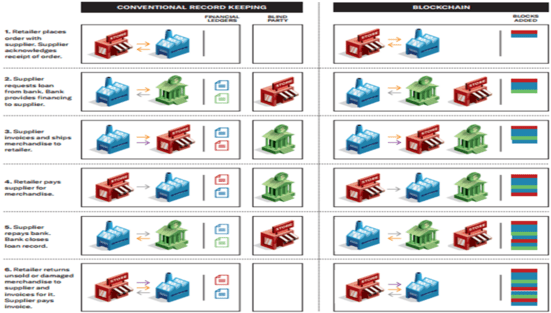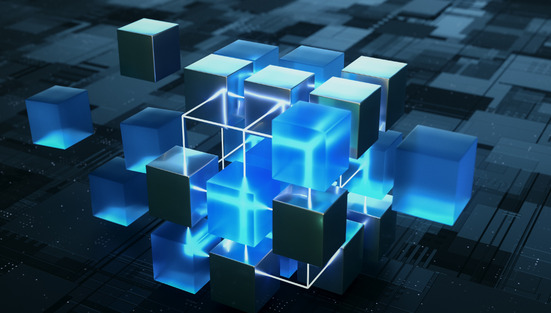Enhance Trust and Speed with Blockchain
- Blockchain
A promising yet underutilized application amongst all soaring blockchain technologies is the supply chain. One can create complete, transparent, tamper-proof records of information flow, inventory flow and financial flows of every single transaction, a unique solution for supply chain partners facing these challenges.
What does a business require?
Fast and cost-efficient product delivery, product's whereabouts, coordinating partners, and access to financing.
Comparison
The above image is just a comparison of how the transactions are recorded conventionally as opposed to using blockchain technology.

The Pros
Every single stage in the above image has its challenge. The Smart contract should be devised in such a way that it incorporates all the points on which all the parties decided to be a part of the transaction. Although the supply chain activities appear to be straightforward, they are significantly more complex than depicted in the illustration. Orders, shipments, and payment processes, for instance, may not accurately sync up if an order is separated into numerous tiny shipments and related invoices, or vice versa.
There have been many efforts made to tighten the supply chain, including the labelling of inventory with RFID tags or digital product identifiers that adhere to GS1 standards (internationally approved guidelines for handling supply chain data), connecting it with the current ERP to remove execution problems including inaccuracies in inventory data, missing shipments, and duplicate payments, assigning accountabilities, and enhancing traceability.
The Cons
A few notable disadvantages of using blockchain technology in the supply chain sector are, it may become a challenge to make a scalable blockchain, and lack of control over data access as the parties involved may not want other irrelevant players to have access to all the data. International trade may face issues due to compliance with the legislation of the countries involved.
Although blockchain technology is being incorporated into the supply chains, there is considerable room to improve the same. In terms of end-to-end traceability, much may be done to improve it including delivery in a timely manner, as well as cooperation among the parties involved. A lot has to be done in devising a workable technological environment with simple consensus protocols, and smart contracts which can also ensure the security of physical assets. It’s about time to include the supply chain managers to assess the system and develop new business rules to build a system that is capable to handle the shortcomings of the existing system. All resources will need to be committed to this, but the effort will pay off.

About the FutureSkills Prime Programme:
FutureSkills Prime, a collaborative effort by nasscom and MeitY, serves as India's technology skilling hub with the objective of transforming the nation into a Digital Talent Nation. The program facilitates widespread access to learning, empowering both students and professionals to enhance their digital expertise and professional competencies. The comprehensive range of courses available through FutureSkills Prime encompasses a diverse array of digital technologies and vital professional skills.
Written by Anurag Kumar, Project Manager, NIELIT Patna


